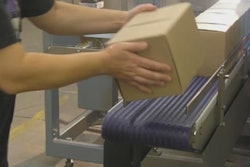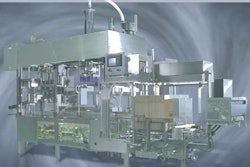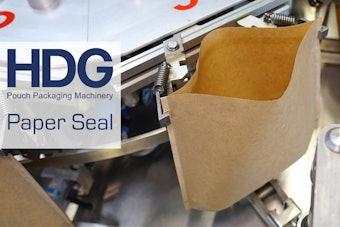
But when it comes to terrorists, many observers have long feared they will target U.S. foods, and the not-knowing adds a lot of fear, which is their whole point.
If you've ever had occasion to sit down and think through how you'd protect your food operation from terrorists bent on poisoning the food, you already have some appreciation for the complexity of the chore. You think through all the spots in your system where poisons or dangerous microbes could be introduced. You realize right away that defending against someone who could and would do just about anything raises a staggering number of vulnerabilities in even the simplest operation. It isn't just terrorists, either. Tamperers pose a similar threat. They may not share the same motivations, but they're capable of doing the same despicable things.
That is why the government's recommendations on how to keep our food supply chain safe have always been so comprehensive, focusing on everything from confirming the purity of ingredients to safe handling of materials to locking truck doors to securing computer records.
And now the U.S. Food and Drug Administration has created an accessible framework for its recommendations, a program it is calling ALERT. There are five ways that food facilities can “decrease the risk of intentional food contamination,” says FDA, and they are:
Assure that supplies and ingredients are from safe and secure sources;
Look after the security of the products and ingredients in the facility;
Employees and others coming in and out of facility—what do you know about them?;
Reports about security of products under your control—could you provide them?;
Threats, when they arise, what do you do and whom do you notify?
For each of the five categories, FDA provides several paragraphs of defense measures and procedures that any food facility proprietor would be well-advised to consider. They are not regulatory requirements, only recommendations, and many of them will look familiar to companies that already have in place materials handling controls, security procedures, and even rudimentary Good Manufacturing Practices. Before they may have been aimed at assuring product quality or preventing theft, but now they should be re-examined as defenses against the threat of terror.
The agency calls for you to know your suppliers, to track materials you use, to limit access to facilities, among many other ideas. The measures and procedures organized into the ALERT system are themselves not new, not even in the post-9/11 era. That's because they are a re-organization of the same ideas and information FDA previously issued in its 2002 publication “Guidance for Industry—Food Producers, Processors, Transporters, and Retailers: Food Security Preventive Measures Guidance.” (FDA also issued similar documents for Importers and Filers and other audiences.)
FDA's David W.K. Acheson, M.D., Director of the Food Safety and Security Staff, led the development of the ALERT program, and he says it and the Guidance are indeed similar, since “The fundamental message is not that different.”
The development of the ALERT program is a lesson in cooperation among governments and industry to provide a practical approach to a very practical problem. FDA thinks about food security in three concepts: (1) Prevention, (2) Response, and (3) Recovery. The ALERT program is geared toward (1) Prevention.
State and local officials told FDA that one of the problems they had identified was a very practical difficulty, that “they couldn't start a conversation about food defense” with industry members, says Acheson. With farm-to-table perspective, these officials from various levels of government worked on creating a tool that federal, state, and local inspectors could use to aid the initiation of such conversations with food manufacturers, retailers, restaurants, and animal feed makers.
Because of its broad intended reach, the message had to be simple and generic. The result was the ALERT acronym, printed on about 1 million wallet-sized cards for inspectors to hand out to industry. Management-level personnel are the targets of the effort.
FDA has also worked on evaluation of vulnerabilities of various segments of the food supply. That effort led them to identify factors that tend to make particular foods more vulnerable to tampering, such as short shelf-life, production in large quantities, or production that requires bulk handling.
For companies that like the sound of a vulnerability assessment, stay tuned in coming months as FDA plans to make a software version available for your use.
If you haven't undertaken the exercise of thinking through your food operation for ways to tighten it against terror and tampering, the ALERT tool makes it easier than ever.
Eric can be reached at [email protected]





















